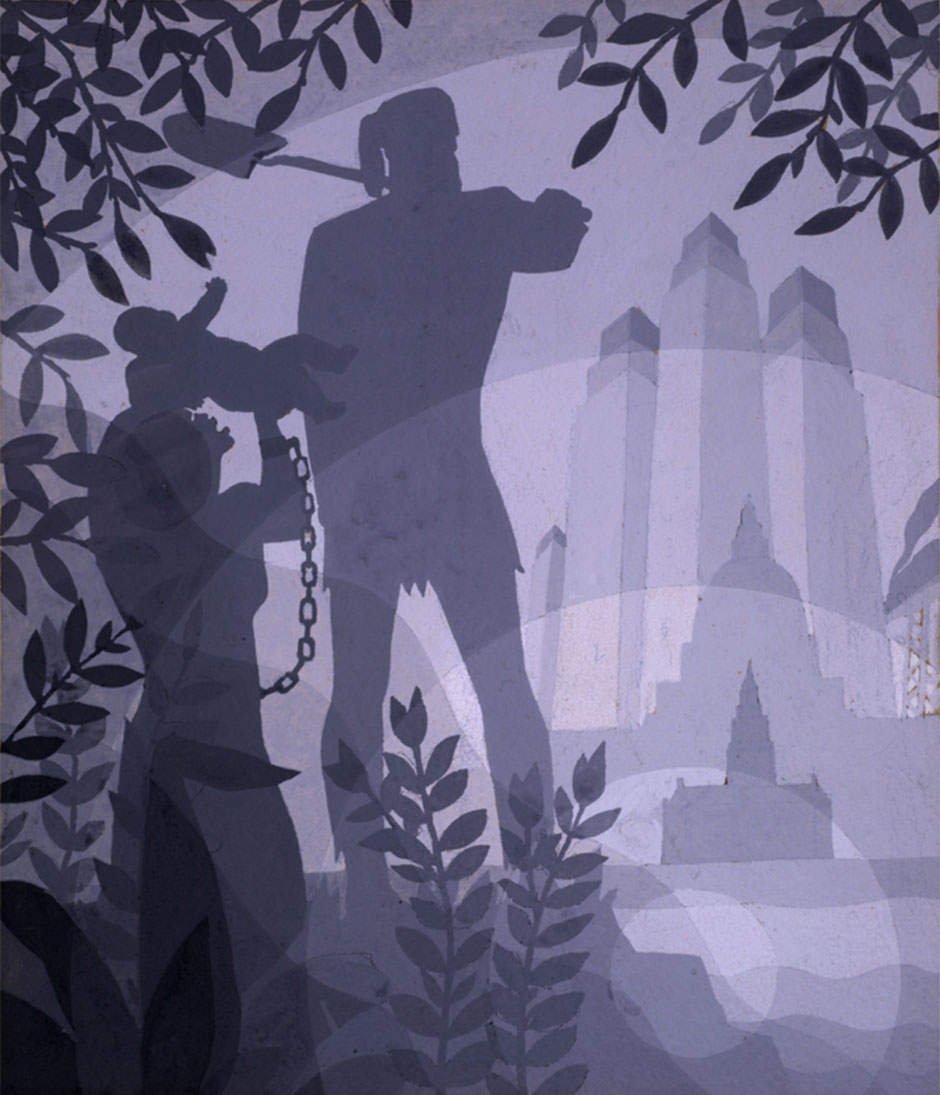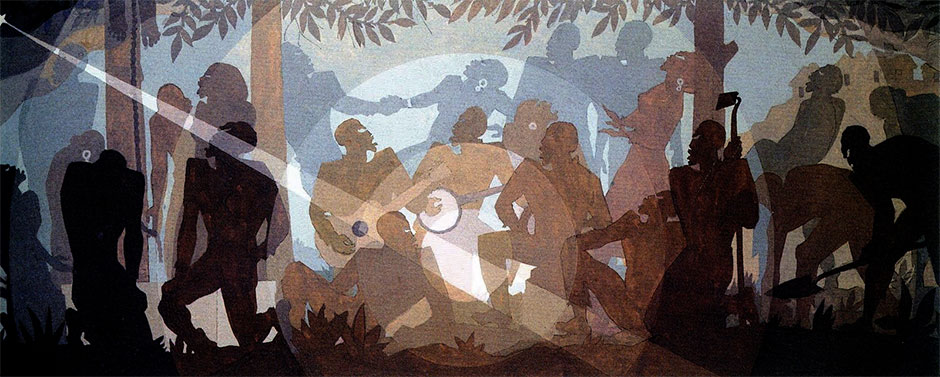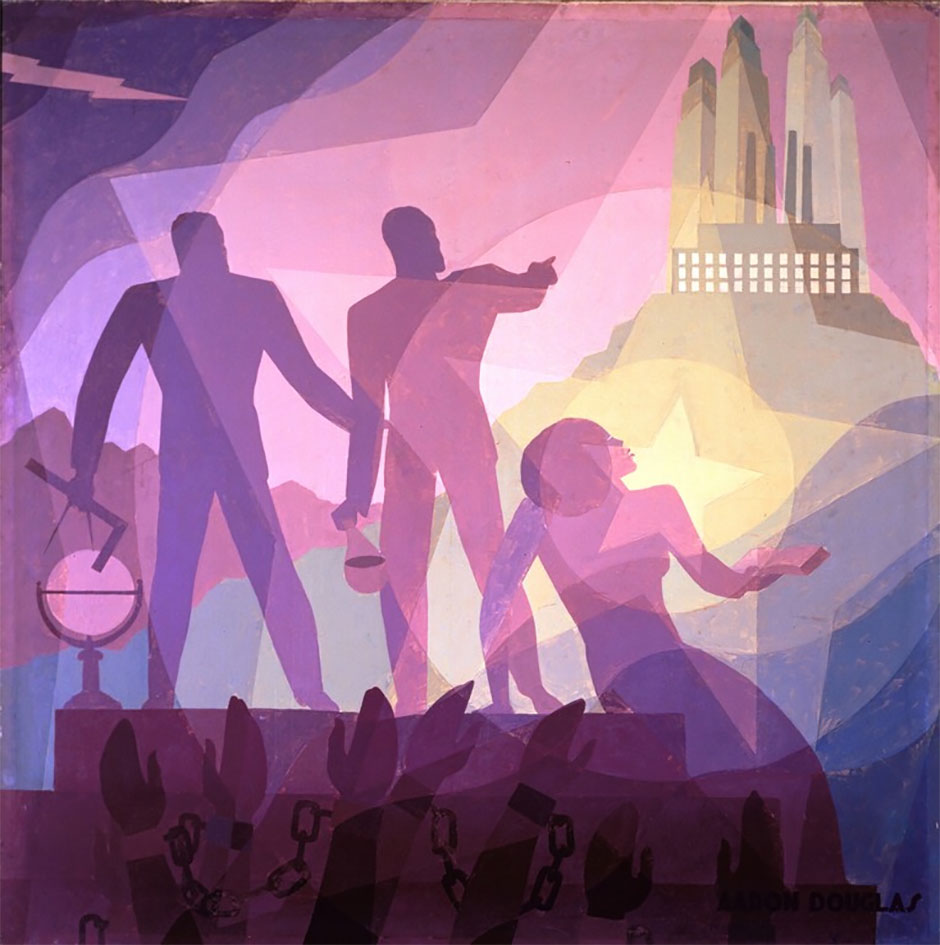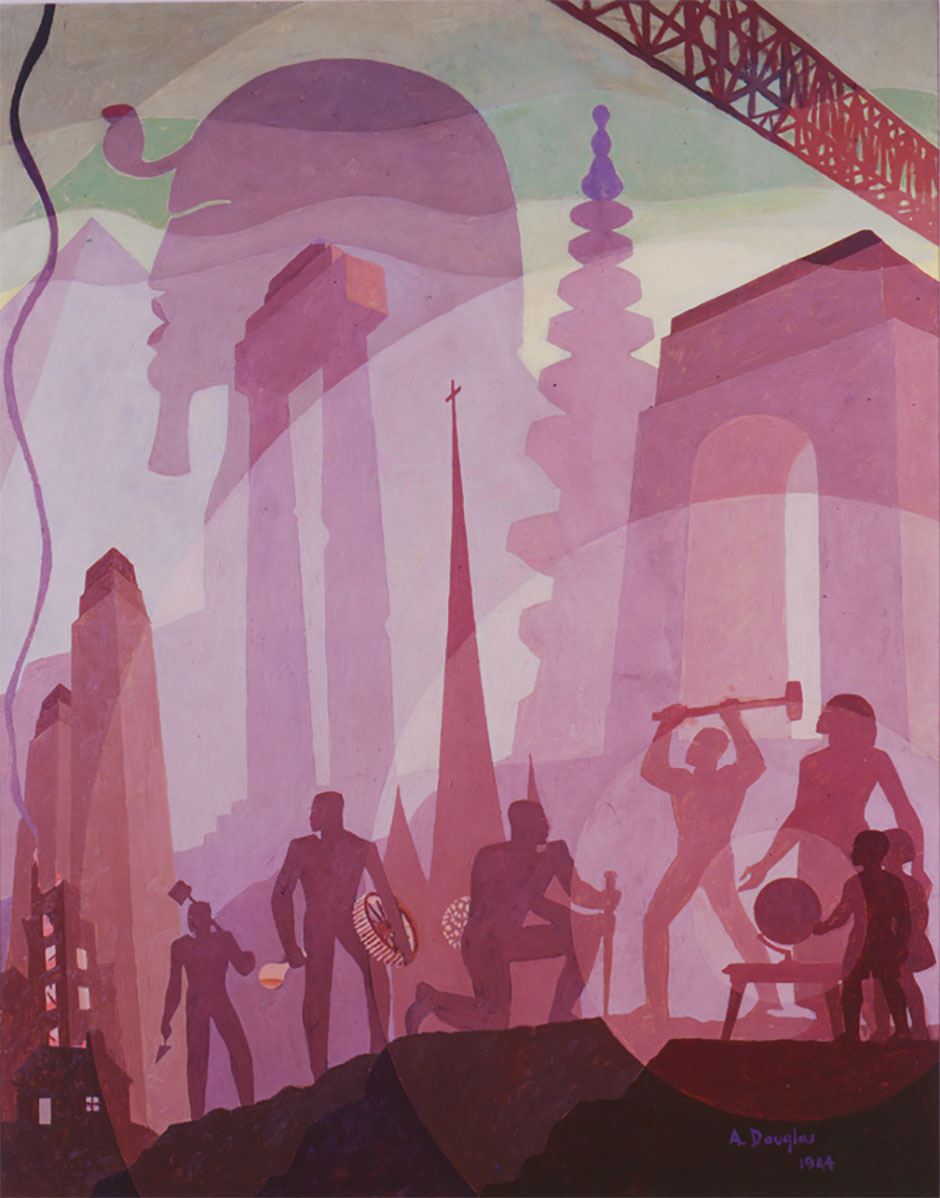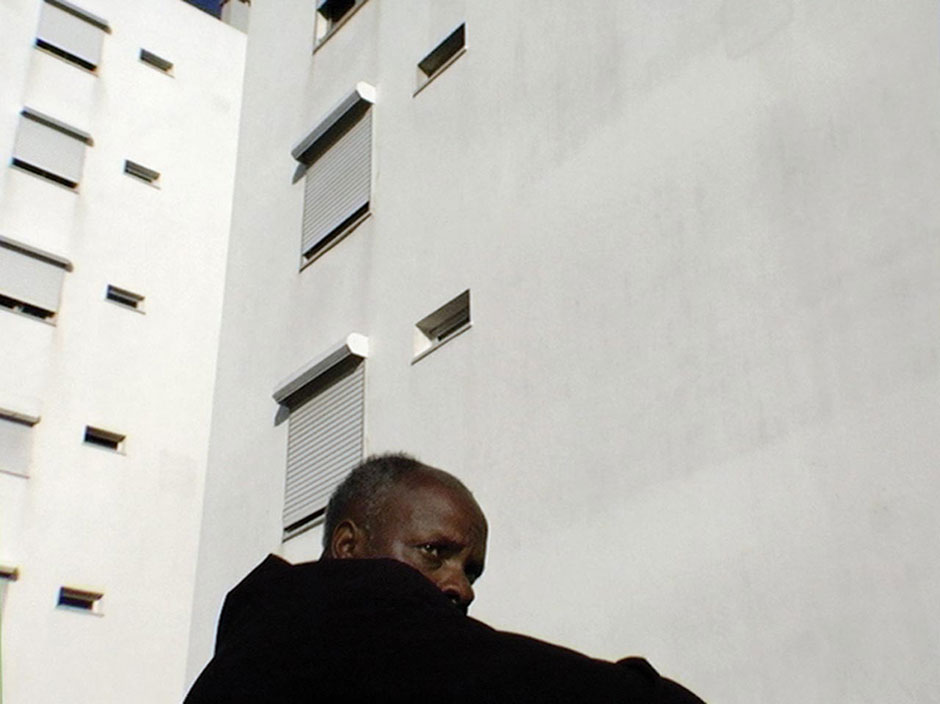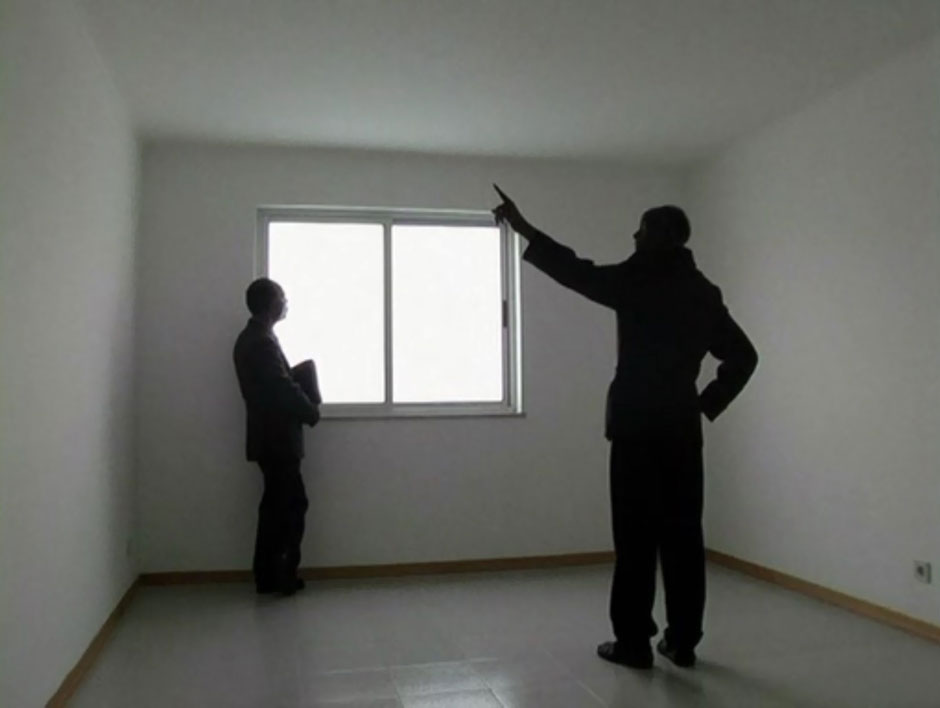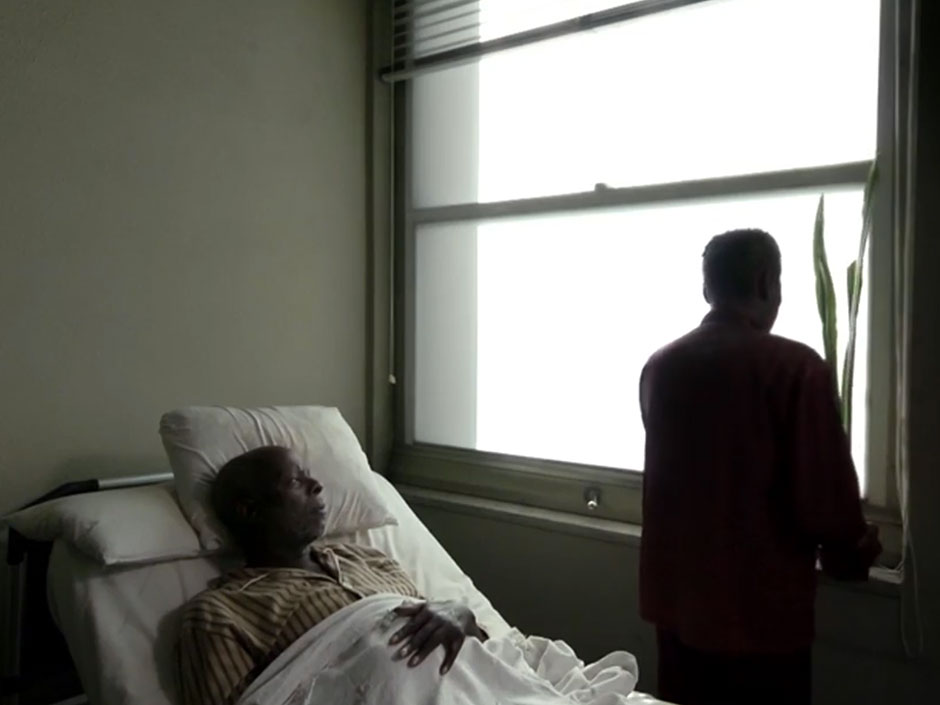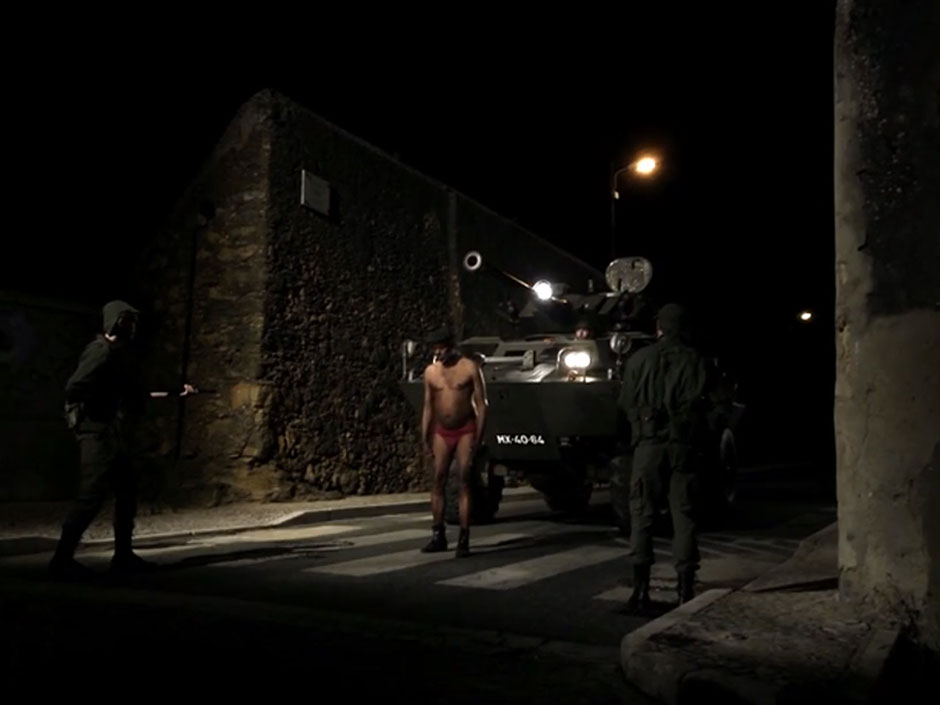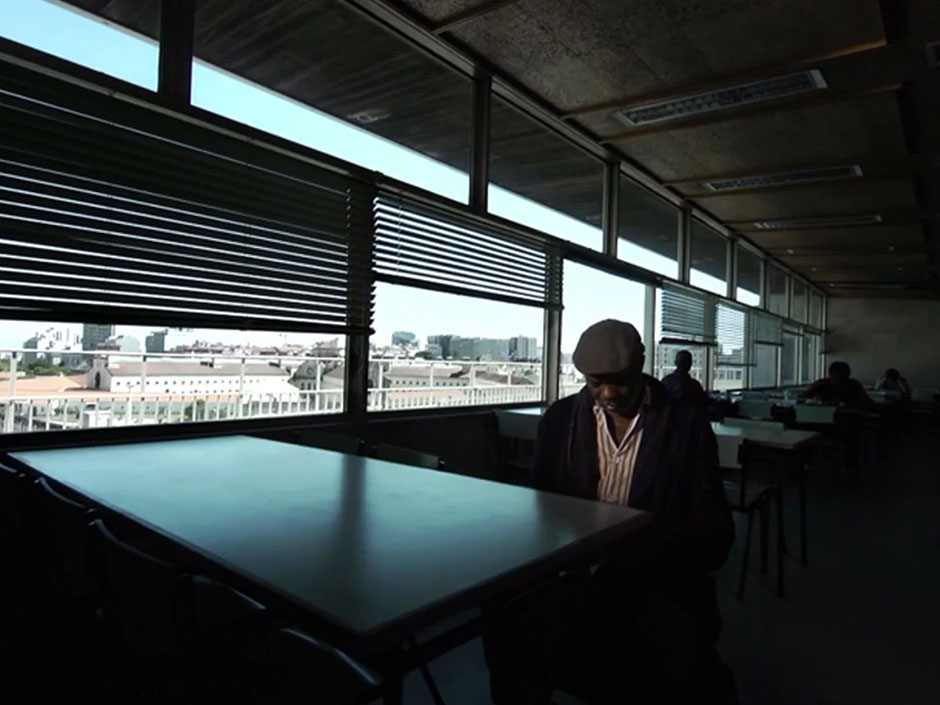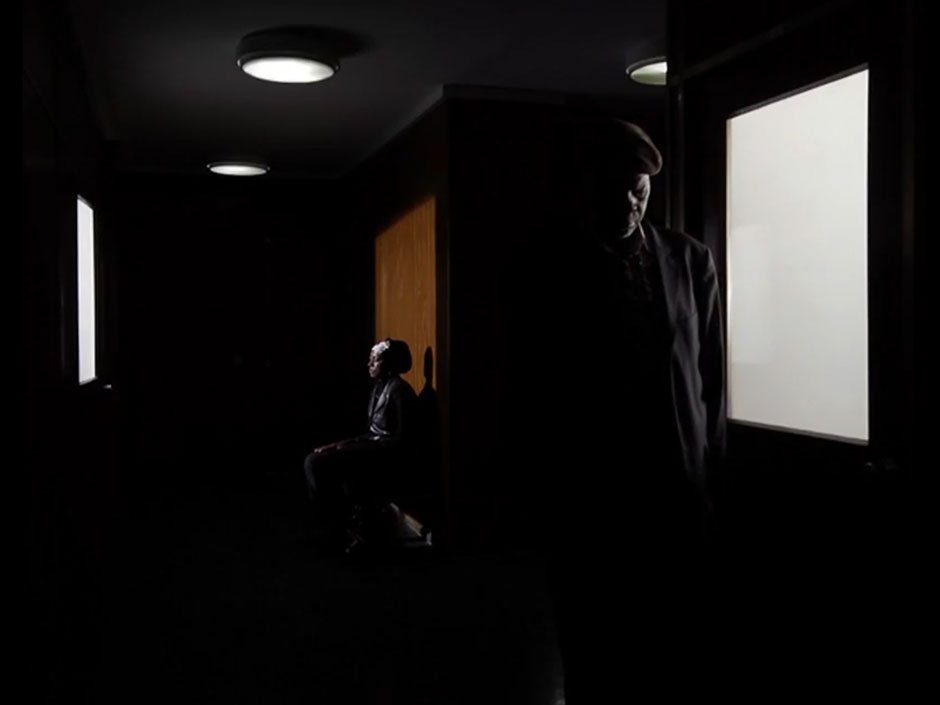In 2007, soon after a screening of Pedro Costa’s Colossal Youth at the San Francisco International Film Festival, I went for a long walk through Golden Gate Park and decided on a whim to explore the de Young Museum. I don’t remember much about the visit except for the 20 minutes I spent standing in front of Aaron Douglas’s Aspiration (1936). (I wrote at length about that experience here.) I was overwhelmed by the uncanny similarities between his brand of Modernism and Costa’s, and I’ve had it in the back of my mind ever since to write an essay drawing a line between the two. If I do it would eventually pass through a number of African-American novelists and the anonymous designers of so many funk, soul, and jazz album covers. That essay seems even more necessary now that Costa is being accused of “aestheticizing poverty.”
Tag: Region: Portugal
-

TIFF 2012 – Day 6
Dormant Beauty
Dir. by Marco Bellocchio
Inspired by the case of Eluana Englaro, an Italian woman who spent seventeen years in a vegetative state and ignited a national cause célèbre, Dormant Beauty tackles the subject of euthanasia by weaving together four stories. In the first, a Senator (Tony Servillo) with first-hand experience of the issue prepares to cast a vote that pits his conscience against his party. Meanwhile, his daughter (Alba Rohrwacher), while participating in pro-life demonstrations, falls for a man whose emotionally-troubled brother is arrested while protesting for the right to die. In the third story, a beautiful drug addict (Maya Sansa) with suicidal tendencies is nursed back to life — perhaps in more ways than one — by a handsome doctor (Pier Giorgio Bellocchio). And, finally, a famous actress (Isabelle Huppert) abandons her career, becomes a recluse, and dedicates her life to caring for her comatose daughter and praying to God for a miracle.As that summary should suggest, Dormant Beauty is in many respects standard, made-for-TV fare. The script hits every predictable beat. When two characters argue, each actor waits patiently for the other to finish his or her line before responding. Huppert’s devout Catholic whispers on-the-nose lines like, “I can’t hope Rosa wakes up unless I have innocence — unless I have faith.” And yet Bellocchio makes it so much damn fun to watch, especially the story line involving the Senator, which he turns into a Juvenalian satire of politics in a media age. Nearly every shot catches a glimpse of a TV screen in the background that is tuned to coverage of the vote, including several scenes set in the bizarre underworld of the legislative baths, where naked Senators consult with a mephistophelean character known only as Lo psichiatra (The Psychiatrist), who offers political advice and anti-depressants by the handful. I especially like one shot near the end, when Senators come rushing through a door after a vote and by some trick of the camera (a really long lens that flattens depth?), the Senate chamber appears to have been replaced completely by a pixelated video monitor. Dormant Beauty is a bit of a disappointment after Bellocchio’s previous film, the excellent Vincere (2009) — it loses momentum each time Belocchio cuts away from the Senator and his daughter — but its best moments were some of the most exciting of the festival.
Something in the Air
Dir. by Olivier Assayas
Set three years after May ’68 and loosely inspired by Assayas’s own political and artistic coming-of-age, Something in the Air follows seventeen-year-old Gilles (Clement Metayer) from his first direct action in the student movement to a sojourn through Italy to his eventual return to Paris, where he studies art and apprentices under his father in the commercial movie business while attending programs of experimental films at night. Something in the Air offers an interesting point of comparison with Dormant Beauty. In both cases, the writer-directors produced fairly banal scripts, but whereas Belocchio frequently generates new and exciting images from the material, Assayas’s direction is strangely anonymous and unremarkable. For a film about beautiful young people discovering sex, drugs, rock-n-roll, and revolution, Something in the Air is inert and humorless. Boring, even.I did enjoy, however, some of the ironies built into Assayas’s backward glance. Something in the Air tackles a relatively un-sexy moment in the history of the Left and its heroes are refreshingly unheroic. More radicalism tourist than party soldier, Gilles is chastised in one scene by older revolutionaries for believing the reports of bodies washing up in Maoist China. And poor Christine (Lola Créton) abandons Gilles for a group of revolutionary filmmakers only to end up answering telephones and washing their dishes. Assayas’s version of the post-’68 Left is more than a bit sexist, and the concurrent rise of second-wave feminism is felt in the film — intentionally and ironically, I think — by its absence.
Berberian Sound Studio
Dir. by Peter Strickland
Apparently I should have written about Berbarian Sound Studio while I was still in Toronto, because two weeks later I can barely remember it. My notes aren’t very helpful, either. The film opens with extreme closeups of analog sound equipment. Instead of opening titles for Berbarian Sound Studio, we see a fun, throw-back, animated credit sequence for The Equestrian Vortex, the low-budget horror film whose soundtrack Gilderoy (Toby Jones) has traveled to Italy to mix. And there is a dream sequence that was apparently impressive in some way. Thus ends my notes. (I average three pages per film at TIFF.)In a way, Berbarian Sound Studio is similar to Tower. Both are simple character studies that conform strictly to a set of internal rules. Here, Strickland limits his entire film to two locations, the studio and Gilderoy’s rented apartment, and likewise limits the camera’s perspective to Gilderoy’s increasingly unhinged point of view. The premise is enjoyable enough for forty minutes or so — I’m a sucker for films about filmmaking — but I was genuinely surprised when the closing titles started to run. I was still waiting for the plot to develop into . . . something. I suspect fans of Berbarian Sound Studio will enjoy debating which parts of the film actually happen and which parts exist only in Gilderoy’s mind. These types of questions are, I think, among the least interesting to ask of a film, and in this case I honestly don’t care.
Nights with Theodore
Dir. by Sébastien Betbeder
Nights with Theodore is one of several oddly shaped films I saw at TIFF. The folding of the Visions program into Wavelengths allowed for more double features that paired, say, a 55-minute “feature” with a 30-minute “short.” Their schedule-unfriendly running times make films like this difficult to program, so I was encouraged to see more of them in the lineup this year. Most of my favorite films at the fest fall somewhere in this category. One pleasure of a 67-minute film like Theodore is that it necessarily breaks convention in the most fundamental way. As seasoned film watchers, we’re familiar, deep in our muscle memory, with 85- to 120-minute run times and predictable act breaks. (Peter Watkins, of course, has a thing or two to say about this.) I feel time differently, more consciously, when I watch a film like this because the shape of the narrative is rare and peculiar.In the case of Theodore, this unmoored-from-convention quality is essential to its success. A fragile nocturne of a film, it imagines the Parc des Buttes-Chaumont in Paris as a fairy-tale wonderland pulsing with occult power. Betbeder cuts throughout the film between the main storyline — Theodore (Pio Marmaï) and Anna (Agathe Bonitzer) are young lovers who leap the fence of the Buttes-Chaumont night after night, irresistibly — and documentary material about the park itself. The film opens with archival maps, photographs, and film clips and with a brief history of the park’s founding. We see video footage of the park during the day time when it’s teeming with joggers, tourists, and picnickers. And Betbeder also include a brief interview with an environmental psychiatrist who recounts the story (truth or fiction?) of a man whose bouts with depression corresponded directly with his proximity to the park. I’d like to see Theodore again before declaring whether all of the pieces fit together to offer anything more than an impressionistic portrait of a place transformed by history, imagination, and obsessive love. Regardless, I’m eager to see what Betbeder does next.
The Last Time I Saw Macao
Dir. by João Pedro Rodrigues and João Rui Guerra da Mata
Equal parts city symphony, essay, film noir, and home movie, The Last Time I Saw Macao is fascinating conceptually but a bit of a mess. Compiled from hours and hours of video shot over many months and on multiple trips to Macao, the film began as a documentary; it was only during editing that Rodriguez and Guerra da Mata stumbled upon the ultimate form of the project. Inspired by Joseph von Sternberg’s Macao (1952) and other Western, exoticized representations of the Orient, the co-directors scripted a B-movie intrigue involving an on-the-run beauty named Candy, a violent crime syndicate, and a much-sought-after, Kiss Me Deadly-like bird cage and then superimposed the drama onto the documentary footage by means of a voiceover and fiction-creating soundtrack. It’s a wonderful idea. Suddenly a random stranger pacing the street and talking on his cell phone becomes a side player waiting for a clandestine meeting. With the addition of gunshot sounds, a couple shutting down their storefront for the night become the latest victims in a gang war.Guerra da Mata described The Last Time I Saw Macao as a “fiction contaminated by memory,” and, indeed, “fiction” and “memory” are almost interchangeable here. Guerra da Mata spent much of his childhood in Macao. We hear his voice. The unseen hero of the film has his name. We see him as a child in old family photos. And I wonder if that might account for the uneven tone and pacing of the film. It’s not by coincidence that Candy lives on Saudade Road. (Saudade might be imperfectly translated as a kind of a deep and pleasantly painful longing for something lost and never to return.)
The ideas at play in this film are almost too numerous to count: the political and economic consequences of China’s takeover of Macao in 1999, the complex legacies of Portuguese colonialism, the queering of glamor and a critique of Western notions of Asian sexuality (I haven’t even mentioned the opening sequence, which turns the classic femme fatale song and dance number, like Jane Russell’s from the original Macao, into a beautiful, campy drag show). But The Last Time I Saw Macao fails, finally, to shape them into anything satisfyingly coherent. It was telling, I think, that Rodriguez and Guerra da Mata invited their editor on stage for the Q&A. The noir idea could sustain an hour. The documentary images of Macao could as well. But Guerra de Mata’s saudade — what should be at the heart of the film — is described but too seldom felt.
-

TIFF 2012 – Day 5
The Master
Dir. by Paul Thomas Anderson
Because I’ve waited until September 21, the day of The Master‘s theatrical release, to write this capsule, and because hundreds of thousands of words have already been spilled on this film (Ignatiy Vishnevetsky’s review at MUBI nails my response almost exactly), I’ll just add two quick thoughts.First, Joaquin Phoenix’s performance is truly a strange thing, and not just by Hollywood standards. The way he collapses his chest and distorts his face reminded me of Emmanuel Schotte in L’Humanite (Dumont, 1999) and also of Antonin Artaud’s disintegration from the striking beauty of The Passion of Joan of Arc (Dreyer, 1928) to the toothless madman of his final years. Phoenix’s histrionic showdowns with Philip Seymour Hoffman didn’t impress me nearly as much as his moment-to-moment embodiment of inarticulate panic. I’d like to see a Douglas Gordon-like version of this film built from nothing but long-distance shots of Phoenix walking.
Second, like nearly everyone else I think the final hour or so of The Master is muddled and frustrating, but I love the final scene, when Freddie: a. finally gets laid, and b. uses the language of “The Cause” as a means of seduction. My main complaint with PT Anderson’s previous film, There Will Be Blood (2007), is that the meticulous period detail is window dressing rather than anything like a real historical context, which is why I’ve never been convinced by readings of it as an analysis of a particular development in capitalism (or religion, for that matter).
The Master, I’d argue, is about post-WWII America in a way that Blood is not about the early-20th century oil boom. Because it defeated a black-and-white evil in Hitler, we like to pretend the “greatest generation” wasn’t devastated — emotionally, psychologically, spiritually, sexually — by the trauma of war. While hardly a perfect film, The Master is, I think, a curious study of the anxiety and desperation that characterized the lives of so many returning veterans and the loved ones they’d left behind. (I never would have guessed a PT Anderson movie would remind me of The Best Years of Our Lives [Wyler, 1946].) That final sex scene makes explicit what has been implied throughout the film. Cults, modern marketing and advertising, talk therapy, family, religion, sex, love — especially love — are all a kind of maddening seduction.
Prediction: Someone is already writing an academic conference paper on The Master and jouissance.
Once Upon a Time Was I, Veronica
Dir. by Marcelo Gomes
First, a quick game of Six Degrees of Brazilian Cinema. Hermila Guedes, who plays Veronica here, also starred in Gomes’s first feature, Cinema, Aspirins, and Vultures (2005), which was co-written by Karim Ainouz. Guedes also starred in Ainouz’s breakthrough film, Love for Sale (2006). Ainouz was at TIFF last year with The Silver Cliff, a character study of an attractive, 30-something dentist who suffers an identity crisis after her husband, without warning, leaves her. Once Upon a Time Was I, Veronica is a character study of an attractive, 30-something doctor who suffers an identity crisis after her father is diagnosed with a vague critical condition. I mention all of that because Veronica is familiar in the worst ways. The Silver Cliff was one of my favorite undistributed films of 2011; Veronica, inevitably, suffers by comparison.Once Upon a Time Was I, Veronica is book-ended by what we eventually learn is Veronica’s vision of ecstasy (or something like that), a strangely prudish orgy on a sun-drenched beach. The opening image is interesting simply because it lacks any context: What’s not to like about beautiful, co-mingled naked bodies rolling in the sand and floating in shallow waters? When the vision returns at the end of the film, immediately after an unnecessarily long, faux-dramatic shot of Veronica being baptized by sea spray and a standard-issue “making a new start” montage, it’s reduced to a banality. Perhaps this is Gomes’s stab at transcendence? There’s just no magic in his mise-en-scene, and certainly nothing approaching the rapturous image of Alessandra Negrini dancing her ass off in The Silver Cliff. Even Gomes’s documentary-like footage of carnival is boring. Seeing this film 24 hours after Far from Vietnam made me wonder what Chris Marker could have made of those crowd scenes. Talk about paling in comparison.
Birds
Dir. by Gabriel Abrantes
I saw the double bill of Birds and Viola because so many friends — really, everyone I spoke to who had seen any of Piñeiro’s work — told me to. So I went into the screening without having even read the program description, which in hindsight I regret. Birds is a lo-fi, 16mm mash-up of ideas, most of which flew by me (no pun intended) on a first viewing. Told in Greek and Creole, it adapts Aristophanes’ comedy The Birds, turning it into an ironic commentary on the legacies of colonialism in Haiti. I hope to see Birds again before writing more about it. I suspect it will reward the effort.Viola
Dir. by Matías Piñeiro
The great discovery of TIFF 2012, Viola is a fantasia on love that dances between dreams, theatrical performances, and a kind of hyper-sensual reality. “When he was singing, I thought I truly loved him,” the title character says in the film’s closing line. It’s typical of Piñeiro’s fluid perspective — a wistful, past-tense comment on a joyful present. Had I not known Piñeiro is barely 30 years old, I might have guessed this was an “old man” movie. His acute attention to potential love (or infatuation) is almost nostalgic, as if that surplus of feeling is so profound because it was always so fleeting. There are three kisses in the entire film, each significant in its own way, but like the particular scenes from Shakespeare that he cuts and pastes into his dialog, all of Viola is charged with barely-suppressed desire. I don’t know how else to put it: this is a really horny movie.Except for a brief interlude in which we see Viola riding her bicycle through town, delivering packages for her and her boyfriend’s music and film bootlegging business, Piñeiro and cinematographer Fernando Lockett adhere to a unique visual strategy throughout the film. Each scene is built from only a handful of shots. Characters are typically framed in close-ups, usually from slightly above and with a very shallow, always-shifting depth of field. The camera moves often but in small and smooth gestures. And, most importantly, nearly all character movement happens along the z-axis.
That’s all worth mentioning, I think, because the form of the film — or, more precisely, the video; Viola is the new standard by which I’ll judge other indie DV projects — is so integrated with its content. Piñeiro often builds scenes around three characters. In some cases all three participate in the conversation (my two favorites take place in a theater dressing room and in the back of a mini-van); at other times, two characters talk while a third remains just outside of the frame, either literally or metaphorically. Viola is a talky movie, and its eroticism (for lack of a better word) is in its language and in its shifting compositions of faces. Piñeiro seems to have found a new form to express the the classic love triangle. The best comparison I can think of is the cafe and tram scenes in Jose Luis Guerin‘s In the City of Sylvia (2007).
According to Andrea Picard’s excellent program note, Viola is the second film (after 2010’s Rosalinda) in a proposed series “inspired by Gérard de Nerval’s Girls of Fire, an 1854 collection of short stories and sonnets each named for its eponymous heroine.” I can’t wait to see the rest.
Wavelengths 4
More to come in my full write-up for Senses of Cinema.
-
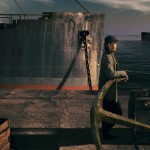
TIFF 2012 – Day 3
Gebo and the Shadow
Dir. by Manoel de Oliveira
I won’t pretend I know anything about Raul Brandão beyond what I’ve just learned from his Wikipedia page — that he became a journalist while working in Portugal’s Ministry of War, that the most productive period in his writing life came after retiring from that career, that he’s an important figure in Portuguese Modernism. Gebo and the Shadow, the latest film from 103-year-old Manoel de Oliveira, is as far as I can tell an adaptation of one section of Brandão’s 1923 novel, Os Pescaderos, a sympathetic study of the beautiful and tragic lives of the hard-working residents of various fishing villages.Although Brandão is a generation older than Eugene O’Neill, de Oliveira’s film plays out like A Long Day’s Journey into Night. Stagy even compared with de Oliveira’s other recent work, Gebo and the Shadow is built from several long, late-night conversations that lead inevitably toward ruination. “It was you and her that bound me to life,” Gebo (Michael Lonsdale) tells his wife Doroteia (Claudia Cardinale), and in that one line is contained all of the film’s tragedy. The daily labors of life, the lies and deceptions, the sacrifices — Gebo’s every action is made in despairing love and generosity for Doroteia and their daughter-in-law Sofia (Leonor Silveira).
Cinematically, Gebo and the Shadow is a fairly simple film. (I heard one other critic at TIFF refer to it as a script table-read.) The opening moments are fantastic, though. The first shot (shown above) is an unnaturally lit, not-quite-realistic image of Gebo’s son João (Ricardo Trepa), who we see in profile, his face and body casting black shadows. (This allusion to the film’s title is obvious to me only in hindsight.) After a quick, impressionistic recreation of one of João’s crimes, de Oliveira cuts to the small room in which nearly all of the remainder of the film occurs. Sofia stands in front of a window, illuminated by candlelight, and as the camera dollies, we catch a glimpse of Doroteia in reflection. It’s a lovely shot that reveals the full physical space in which the characters exist, while also setting up the female leads as mirror images of one another. An especially nice touch is that the first image of Doroteia is blurred. At first it’s possible to mistake her for a literal reflection of Sofia, one of the film’s many reminders of the passage of time. (No reminder is more shocking than watching the aged faces of Cardinale and Jeanne Moreau.)
differently, Molussia
Dir. by Nicolas Rey
Nicolas Rey introduced differently, Molussia with a long quotation from an essay by Günthers Anders in which Anders critiques the common usage of the word “totalitarian.” Rather than an adjective by which one speaker defines himself in opposition to another (it’s always the other power or system that is “totalitarian”), Anders argues that totalitarianism is instead characterized by its “sense of the machine.” “What can be done, needs to be done,” he writes. Once a technique is discovered, it will be marketed until a need for it is created, which can then be exploited for profit. Resistance, as they say, is futile. Rey smirked while quoting Anders again during the Q&A: “Nothing discredits a man more quickly than critiquing a machine.”The essays Rey quoted were written some thirty or forty years after his only novel, The Molussian Catacomb (1932-36), a collection of brief, witty, and incisive conversations between prisoners in an imaginary fascist country. Rey’s remarkable adaptation is built from nine reels of hand-processed 16mm film and shown in random order (making 362,880 possible versions of the film). Each includes a voice-over reading of a passage from one chapter of the novel, juxtaposed against images of landscapes, a soundtrack that mixes machines and natural sounds, and occasional portraits of the residents of Molussia (most of the film was shot within close driving range of Rey’s home near Paris). My interview with Rey and a much longer write-up about the film will be included in the next issue of Senses of Cinema.
Night Across the Street
Dir. by Raul Ruiz
Long John Silver, rhododenrons, retirement parties, desert landscapes, Beethoven, pink walls, mysterious assassins, four-letter words, childhood memories, gun barrels, a beautiful dancer, bicycles, Antofagasta, classroom anxiety, shiny faces, a man who never speaks, ugly video, ships in bottles, a last desperate gasp of life, and ghosts and ghosts and ghosts.That’s all I’ve got.
Wavelengths 2
More to come in full write-up later this fall.
-

TIFF 2012 – Day 1
I’m covering TIFF for Senses of Cinema again this year, so later this fall I’ll publish a much longer and more thoughtful report there, but I’m determined to capture initial thoughts on everything I see this week. I will, inevitably, fail in this effort.
In Another Country
Dir. by Hong Sang-soo
There are two great pleasures in watching any film directed by Hong Sang-soo. The first, oddly enough, is suspense. I say “oddly” because he makes talky movies about love and jealousy and the pained confusions of life. Hong’s writing and his cinematographic style, however, drop us into a uniquely unpredictable world. “So these things really happen?” a young woman and wannabe screenwriter asks in the second shot of In Another Country, soon after being told some bad news about her family. Hong captures her and her mother in a medium shot for several seconds before a jump zoom reframes them. It’s the first of many long-duration, single-take scenes in which Hong’s camera pans, tilts, and zooms from a fixed position, constantly recontextualizing his characters. A Korean man flirts casually with a visiting French director (the first of three roles played by Isabelle Huppert) before the camera pulls back to reveal that his wife is also sitting with them. Huppert #2 sits on the beach, whispering “beautiful, beautiful” to the sea until the camera pulls back to reveal her lover, who enters, impossibly, from outside the frame in what we soon learn is a fantasy. Hong’s narrative path consists only of blind turns.The other pleasure is tied directly to the first. The long takes and narrative suspense allow room for spontaneous and surprising performances. This has always been the case with Hong but adding Huppert to the mix shakes up the now-familiar chemistry of his films. My favorite moment comes at the end of the second story, when Huppert alternately slaps her lover’s face and declares her love for him. Huppert has until that point played this character, this version of the visiting Frenchwoman, as a relatively meek and flighty suburbanite. But in her final confrontation, she becomes Isabelle Huppert — all unpredictable intensity — and momentarily breaks the film. It’s great fun to watch.
Laurence Anyways
Dir. by Xavier Dolan
With another decade or two of life experience under his belt, I can only imagine what kind of filmmaker 23-year-old Xavier Dolan might become. By that I don’t mean to damn him with faint praise because Laurence Anyways is a very good film. Based on this and Heartbeats (2011) — I haven’t yet seen his debut, I Killed My Mother (2009) — Dolan already has a remarkable visual imagination and, more impressively, a mature-enough understanding of form to execute it on screen. Before watching Heartbeats for the first time last week I expected him to stumble occasionally into interesting images; I was surprised, instead, to find a very young director in control of the film.I have a weakness for movies like Laurence Anyways — melodramas that combine realistic performances with explosions of expressionism. At this point in his evolution, Dolan excels at the latter, particularly when he takes camp to ecstatic heights. He’s at his best when the soundtrack is thumping and when the images subsume, temporarily, the characters and become the drama. If the realistic portions of the film drag at times, there is at least a marked progress here from what I saw in Heartbeats. Dolan has a talent for using reaction shots — both in generating a range of emotions from his actors’ faces and cutting them effectively in sequence — so much so that it’s in danger of becoming a crutch. In this new film, though, he’s progressed beyond that and built some nice, complex moments.
Argo
Dir. by Ben Affleck
I’m the wrong person to write about Argo. At this point I honestly can’t tell the difference between parodies of Hollywood dramas and the real deal. Argo is competently made and occasionally fun, and I’m still hopeful that Ben Affleck will prove himself to be an interesting director, but this film is an exercise in manufactured suspense weighed down by a humorless lead performance by Affleck. That it treats the Iranian revolution like the Star Wars bedsheets, rotary dial telephones, and thick mustaches that lend the film its period detail might be forgivable if the film weren’t so boring. But, again, I’m the wrong person for this film. It will be a critical hit, I’m sure.Tabu
Dir. by Miguel Gomes
I’ve been anticipating Tabu since last February when it premiered in Berlin, and that feeling of anticipation never quite left me throughout tonight’s screening. I’m not sure what I mean by that, exactly, except that I wanted this film to be more formally daring or more politically complex or more opaque than the relatively simple film Gomes made. Now this is damning with faint praise: I wish Tabu had been around in 1997 when I was taking a graduate seminar in post-colonial literature. Memory, history, guilt, privilege, religion, symbols of captivity, dreams of hairy monkeys (!), a black woman improving her literacy by reading Robinson Crusoe (!!) — it’s all here, rendered in beautiful shades of gray. The sound design alone makes the film fairly compelling from moment to moment (although I’ll own up to being bored by sections of part 1), but I wanted more. -
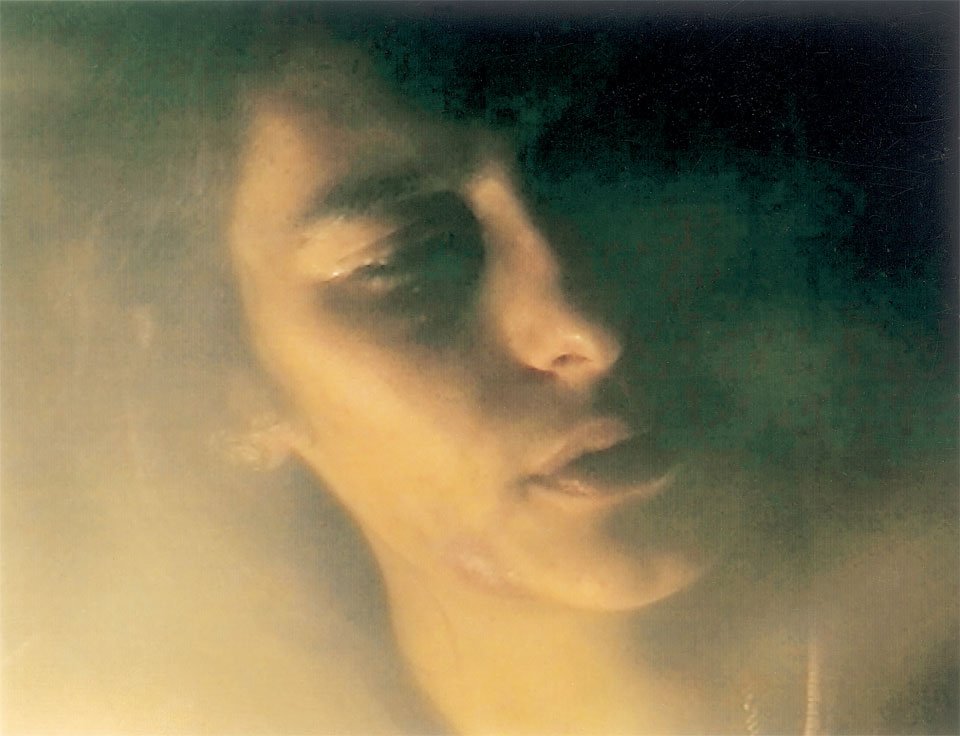
Pedro Costa’s “Vanda Trilogy” and the Limits of Narrative Cinema as a Contemplative Art
This essay was originally published in Faith and Spirituality in Masters of World Cinema (2008), edited by Kenneth Morefield for Cambridge Scholars Publishing.
– – –
The main problem with narrative in film is that when you become emotionally involved, it becomes difficult to see the picture as picture. Of course, the laughing and crying and suspense can be a positive element, but it’s oddly nonvisual and gradually destroys your capacity to see.
— Michael Snow (Snow, 67)The same moment that we are looking, we forget.
— Jean-Luc Godard (Walsh)For experimental filmmaker Michael Snow, a viewer’s ability, literally, “to see” is of first importance. Snow came to film relatively late in life, having explored first the fields of music, painting, sculpture, and photography, and cinema for him has never been primarily a storytelling medium. Rather, he treats the foundations of film—mechanically produced light and sound moving in time—as just more artistic material. Snow’s most famous film, Wavelength (1967), for example, is essentially a 45-minute, continuous forward zoom through a New York loft, accompanied by an electronic sine wave that over the course of the film modulates gradually from its lowest frequency (50 cycles per second) to its highest (12,000 cycles per second). Wavelength deliberately rejects the traditions of narrative cinema and foregrounds, instead, the structure and mechanics of film. For Snow, then, a comparison might be made between the typical movie viewer and an impatient museum-goer, who rushes from portrait to portrait noting only the names of the historical figures represented there while overlooking completely all that distinguishes one artist’s brush or canvas from another. Artistic form vanishes amid the simpler pleasures of narrative.
Placed within the context of a discussion of faith and spirituality, Snow’s warning about the dangers of narrative cinema takes on an obvious metaphorical meaning as well. Religion is, to borrow the Evangelical parlance of the day, a “worldview,” a lens through which people of faith examine every issue before claiming a moral position, forming judgments, and acting (or choosing not to act). Snow’s demand that we see “the picture as picture” implies an attentive, active observer as opposed to a passive consumer of images. He is warning against what theologian P. T. Forsyth, in his writings on aesthetics, calls “the monopoly of the feelings,” whose aim is to move men rather than change them. For Forsyth, hardly an iconoclast himself, the error “is the submersion of the ethical element, of the centrality of the conscience, and the authority of the holy” (qtd. in De Gruchy, 74). Narrative cinema, with its seamless cutting, heroic faces, and manipulative musical cues, is particularly well-equipped to monopolize one’s feelings and co-opt one’s imagination, thus rendering the passive religious viewer pliable to anti-religious ideologies. The Soviet filmmaker Andrei Tarkovsky calls this tendency “tragic”: “if art can stimulate emotions and ideas, mass-appeal cinema, because of its easy, irresistible effect, extinguishes all traces of thought and feeling irrevocably. People cease to feel any need for the beautiful or the spiritual, and consume films like bottles of Coca-Cola” (179).
The work of Portuguese filmmaker Pedro Costa is a useful test case for a discussion of the limits of narrative cinema as a contemplative art. Without abandoning narrative altogether, Costa has over the past two decades moved progressively toward abstraction and, in the process, has discovered his own brand of what avant-garde filmmaker Nathanial Dorsky calls “devotional cinema”: “a way of approaching and manifesting the ineffable” (Dorsky, 27). In particular, Costa’s trilogy of feature films set in and around Fontainhas, an immigrant slum in Lisbon, demonstrates an increasing dissatisfaction with the tropes and traps of conventional cinematic storytelling.
In the “Vanda Trilogy,” as it has become known—Bones (Ossos, 1997), In Vanda’s Room (No Quarto da Vanda, 2000), and Colossal Youth (Juventude Em Marcha, 2006)—Costa pays homage to other spiritually-minded filmmakers such as Tarkovsky, Robert Bresson, Carl Dreyer, and Yasujiro Ozu, while also borrowing from the formal and explicitly political legacies of Jean-Luc Godard, Jean-Marie Straub, and Daniele Huillet, the latter two of whom are the subject of Costa’s 2001 documentary, Where Does Your Hidden Smile Lie? (Où gît votre sourire enfoui?). Costa’s films are infected with the same nostalgia for Modernism that characterizes so much of today’s art cinema, where the rigor of Bresson and the alienating camera of Michelangelo Antonioni threaten to inspire a new “Tradition of Quality” characterized by expressionless faces, glacial pacing, and calculated stabs at transcendence. But what distinguishes Costa from his contemporaries is his uncynical commitment to form and ethics, which are bound in his films not by transcendence but by imminence—that is, by the sacred dignity of the material, human world.
When Costa’s first feature-length film, The Blood (O Sangue), opened in 1989, it was something of an anomaly simply due to the fact that theaters in Lisbon were not at the time showing Portuguese films. Describing his and his classmates’ experience of film school in the late-1970s and early-1980s, Costa says, “there was no past at all. We knew that [Manuel] Oliviera had done Aniki Bobo (1942) and a few other things in the ‘60s. There was a guy named Paolo Rocha too, but as for the rest . . . We were not even orphans, we were the unborn” (Peranson, 9). Rather than film history, Costa’s formal training emphasized theory, as Lisbon’s Escola Superior de Teatro e Cinema was well appointed with teachers who remained caught up in the spirit of the “Carnation Revolution” of 1974. The school was also frequented by radical lecturers from France, including writers from Cahiers du Cinema. “Revolutionary tourism,” Costa calls these visits by Marxist critics and intellectuals. “It was a completely impossible situation” (8).
Costa received what he calls his real film education after leaving school. While working on various productions throughout the 1980s (“I never learned anything at all from that” [9]), he attended nightly screenings at the Lisbon cinematheque, watching complete retrospectives of the classic auteurs: John Ford, Fritz Lang, Nicholas Ray, Kenji Mizoguchi, Roberto Rossellini, Ozu, Bresson, etc. Their influence can be felt throughout The Blood, which, while stunning to look at, doesn’t quite work aesthetically or even at a basic narrative level. It’s a very personal film—the first of Costa’s many attempts to rescue on celluloid the family he was denied, personally, as a child—but its lush, romantic black-and-white photography, its Igor Stravinsky score, and its many mannered allusions to other filmmakers (Bresson, Ray, and Charles Laughton, in particular) are superimposed onto its small story of two young brothers in a manner that generates an unsatisfying tension between the narrative and form. The Blood is like a purging of Costa’s long-gestating ideas and influences and has little in common with the films that followed.
By contrast, Down to Earth (Casa de Lava, 1994) is much more assured and coherent. Costa claims to have begun the project out of anger with Portugal’s turn to the right amidst the formation of the European Union, which precipitated a dramatic restructuring of the nation’s economy, including the privitization of television. The few sources of funding in Portugal’s small film economy dried up. “I was so disgusted that I told Paolo [Branco, his producer] that if he’d give me some money I’d go to Africa and make something there,” Costa says (11). The decision would prove to be an important turning point in his career. Like a mash-up of Jacques Tourneur’s I Walked with a Zombie (1943) and Claire Denis’s Chocolat (1988), Down to Earth concerns a young woman, Mariana (Ines de Medeiros), whose exotic notions about the Other are tested and refuted by first-hand experience. Wishing to escape the mundane, lonely existence of her daily life as a nurse in a Lisbon hospital, Mariana escorts an immigrant patient back to Cape Verde, the former Portuguese colony off the west coast of Senegal.
Any illusions Mariana has about the romantic allure of Cape Verde are challenged, however, from the moment she arrives there. Dropped off in a barren field by helicopter, she finds herself alone with her patient’s still-comatose body. And when she does finally make her way to the local medical clinic, she’s frustrated to discover a general apathy about her patient’s condition. It’s the first of many such scenes in which Mariana misinterprets the behavior of those around her. She is forever asking the Cape Verdeans to speak in Portuguese rather than Creole. “I don’t understand you,” she repeats again and again. Like so much Post-Colonial art, Down to Earth explores the various ways in which meaning is interpreted and reconstructed by competing powers.
Down to Earth, an impressive film in its own right, also sets the stage for the “Vanda Trilogy.” Costa’s experience with the people of Cape Verde gained him access to the poor immigrant communities in Lisbon that continue to be his principal subject. But Down to Earth also introduces several formal touches that have become hallmarks of Costa’s style. The film opens in complete silence as we watch the simple white-on-black credits, followed by a montage of volcanoes. It’s found footage, presumably, but Costa’s syncopated cutting turns it strange and abstract. Music enters at the two-minute mark, and it’s likewise complex and counter-rhythmic, a viola sonata by Paul Hindemith. Its atonal bursts of dissonance disturb the beauty of the nature sequence, but the piece also alludes to High Modernism and acknowledges the camera’s “outsider” perspective. This film about Cape Verde is the work of a Portuguese director and a European economy, and it would certainly find its largest audiences among First World festival-goers and cineastes.
Costa next cuts together a montage of iconic portraits. He frames the women of Cape Verde in close-up, shooting their hands, the backs of their heads, and, most often, their expressionless faces. The women share several particular traits: thick eyebrows, pronounced cheekbones, freckles, and wisps of hair on their upper lips. They have centuries of colonialism, slave trade, and miscegenation written into their DNA. Then, in the closing seconds of the sonata, Costa cuts again, this time to a construction site in Lisbon, where several Cape Verdean men are working. It’s a remarkable feat of filmmaking. In less than three-and-a-half minutes Costa has established the central conflict of the film—that is, the perilous relationship between colonizer and colonized and the complex history (economic, political, cultural, and familial) they continue to share—and he’s also implicated himself and the audience in that history.
In the “Vanda Trilogy,” Costa continues to evolve his use of elliptical editing and static close-ups, but as he gradually moves away from standard narrative forms he also begins to experiment more conspicuously with sound design and mise-en-scene. Bones opens with another of Costa’s icon-like portraits, this time a forty-second, mostly-silent medium shot of a nameless young woman who is barely visible amid the shadows of an underlit room. The film is set in the Fontainhas district of Lisbon, a claustrophobic place where people wander into and out of rooms and seldom, if ever, find a space where they can be alone. Even the most intimate of experiences (sex, an attempted suicide) are observed directly by others or are intruded upon, psychologically, by the constant, low-frequency hum of neighborhood arguments, music, and crying children. Because Costa never gives us a top-down perspective of Fontainhas—because he never establishes a navigable geography—we get lost there, too. There’s little direct sunlight, even in the few scenes shot during daytime, and the narrow alleyways between buildings are like paths through a hedgerow labyrinth.
All of this is significant because Costa establishes a stark dichotomy between Fontainhas and the middle-class districts where one of the main characters goes to clean apartments. The dank, congested din of slum life seems a world away from her employers’ white-walled flats. And given Costa’s elisions, it’s impossible to situate either district in a real geographic space: they might be a world away; they might be right next door. Costa’s approach to his subject creates a dialectic of sorts, as he accomplishes more than simply reminding us—in a pat or comforting way, as a traditional narrative would inevitably do—of the differences between the haves and have-nots. Rather, he has set these two worlds in direct opposition to one another. Or, more to the point, he’s developed a cinematic form that arises, organically, out of an already-existing (in the real word) and material opposition.
By comparison to the two films that would follow, Bones has a relatively traditional plot. A teenage girl has given birth to a child that she and the baby’s father are unable and unwilling to raise. Three women attempt to come to the couple’s rescue: Clotilde (Vanda Duarte), a neighbor who works as a house cleaner; Eduarda (Isabel Ruth), a middle-class nurse who treats the child in hospital; and an unnamed prostitute (Ines de Medeiros) who offers to raise the baby herself. Like Mariana in Down to Earth, all of the women in Bones are lonely and in search of love, security, and some kind of domestic pleasure. Particularly given Costa’s use of several non-professional actors and his determination to shoot the film on location, the subject matter of Bones is potentially exploitative. The danger is that it could become one of those unsentimental, “fly on the wall” films that tend to be commended by liberal Western audiences for their access into “a world seldom seen on-screen.” Tahani Rached’s These Girls (El-Banate Dol, 2006) is a fitting example. Rached’s film is a well-intentioned and unsettling documentary about the street girls of Cairo who spend their days huffing glue, avoiding arrest, and suffering violence at the hands of men and each other. In her attempt to remain objective and to strip away her authorial voice, however, Rached has made a film that is as ephemeral, emotionally and morally speaking, as a “Feed the Children” television commercial. Both stoke the audience’s guilt with provocative images of suffering but offer precious little analysis. Rached’s film ends up functioning much like a typical Hollywood entertainment or TV show. These Girls, in fact, is sentimental, but it appeals to sentiments like pity and shame.
Such sentiments are easily elicited by even incompetently constructed narrative images. Soon after the release of his film For Ever Mozart (1996), which concerns, in part, the Bosnian War, Jean-Luc Godard was asked if he felt Western governments had made use of televised images of suffering in order to promote their political agendas. “Yes, of course,” he replied. “We made images in the movies, when we began, in order to remember. TV is made to forget. We see Sarajevo, okay, we forget in two seconds. The same moment that we are looking, we forget” (Walsh). If cinema is to have value as a contemplative art then it must, as Snow suggests, teach us “to see,” and it must do so in a manner that avoids reducing the image to gross propaganda. “Beauty has been redefined to serve commercial and ideological ends,” writes theologian John W. De Gruchy in Christianity, Art and Transformation: Theological Aesthetics in the Struggle for Justice. “This abuse of art does not necessarily reflect a lack of aesthetic sensibility; rather it manipulates it to great effect because people do not have the ability to evaluate its character or consequence” (92). For De Gruchy, art must instead serve a prophetic function by “disrupt[ing] and destabiliz[ing] dominant portrayals of reality and, in turn, offer[ing] alternative perceptions of reality.” Contemplative art, De Gruchy argues, offers historical analysis, it imbues the contemplative viewer with empathy, it unmasks hypocrisy, and it evokes hope that compels action (200-01).
The material of cinema poses particular problems in this regard, however, as commercial interests have proven remarkably adept at consuming images, narrative tropes, and editing techniques—no matter how Modern and defamiliarizing they might have once seemed—and regurgitating them into our visual culture. (Prime time television, especially during commercial breaks, now regularly broadcasts images that until very recently would have seemed avant-garde.) Made nearly a decade after For Ever Mozart, Godard’s Our Music (Notre Musique, 2004) revisits Sarajevo and again questions our capacity to ignore and even enjoy the suffering of others, this time by subjecting viewers to “Hell,” an intensely visceral, ten-minute collage of newsreel war footage and violent film clips. With “Hell” Godard seems resigned in his anger, as if he’s whispering a cynical challenge to every viewer: “I know that you will forget all of this too.”
Discussing Down to Earth, Costa suggests that he shares Godard’s concerns about the epistemological instability of filmed images: “I set out to make an angry film about prisoners in Africa but then the Romanesque took over” (Peranson, 11). Presumably, by “Romanesque” he’s referring to the Gothic elements in the film—the sublime landscapes, haunted glances, and romantic entanglements that are conspicuously absent from his later work. What’s interesting about his comment, though, is his admission that he was, in a sense, helpless to prevent the formal components of his film from “taking over” and reshaping its content. With Bones, Costa begins to strip away all such elements that might fall too easily into convention. There are hints of this even in Down to Earth. For example, at the midpoint of the film he cuts together three close-ups of locked doors and floods the soundtrack with crying children, creating an ambiguous disunity between the sound and image. This approach is extended throughout Bones, in which the life of Fountainhas is represented predominantly by the offscreen sounds it makes. It’s an effective gesture toward Bresson, who, in Notes on the Cinematographer, writes, “When a sound can replace an image, cut the image or neutralize it. The ear goes more toward the within, the eye toward the outer” (51).
As many commentators have noted, Bresson’s use of sound functions metaphorically, representing the natural world just beyond the limits of the country priest’s experience, for example, and equating Mouchette’s plight with that of the partridges poached by Arsene. But Bresson’s sound design also creates a hard, physical reality. Every inhabitant of Fountainhas is like Fontaine, the heroic prisoner in Bresson’s A Man Escaped (Un condamné à mort s’est échappé, 1956), whose determined attention to every passing sound renders the outside world in sharp clarity. When asked why he so often underlit the faces of his actors in A Perfect Couple (Un Couple Parfait, 2005), Japanese filmmaker Nobuhiro Suwa responded, “There are two ways to really watch. One is to open your eyes and look closely; the other is to close your eyes and imagine.” Consumers of traditional narrative cinema are seldom required to do much of either, however, as the combined effect of continuity editing, high-key lighting, emotive acting, and on-the-nose dialogue skillfully conspires to eliminate any potential confusion or ambiguities from the story being told. Viewers of Costa’s films, like those of Bresson and Suwa, are expected to stay alert and attentive, while also remaining free, like readers of great fiction, to participate in the imaginative act of world- and character-creation.
A telling example of Costa’s formal strategy comes early in Bones. The young mother and father share only one scene in the entire film, a strange and wordless encounter marked by exactly the kinds of ambiguities seldom found in narrative cinema. First, we see the girl and boy separately. Tina (Mariya Lipkina), having just been released from the hospital, carries home her newborn son, lays him on the couch, shutters the windows, and opens the valve of a gas tank that she has dragged in from the kitchen. Along with the muffled sounds of neighbors, we also now hear the hiss of escaping gas, as Tina takes a seat beside her fidgeting child and closes her eyes. Costa then cuts to the nameless father (Nuno Vaz), who is wandering alone through Fontainhas. When he eventually arrives at Tina’s home, he finds her and the child lying motionless on the couch. Recalling both Pier Pasolini’s rendering of Christ in The Gospel According to St. Matthew (Il Vangelo Secondo Matteo, 1964) and Carl Dreyer’s portrait of Joan of Arc (La Passion de Jeanne d’Arc, 1928), Costa then frames the boy in an extended close-up as he examines and contemplates the scene around him. Silently and without expression, he walks past the couch and into another room, where he collapses in Tina’s bed. He remains alone there for a moment until she comes to his side, wrestles him to the floor, and drags him by his shoulders into the room where their sleeping child lies. The sequence is capped by a cutaway to another iconic portrait of the unnamed woman from the opening shot of the film, who stares into the distance like a silent witness.
By conventional standards, this sequence, which includes an attempted suicide and infanticide, is relatively undramatic. Even the moment when Tina releases the gas and closes her eyes is more curious than horrific. The low-level lighting shrouds her face, and Lipkina’s performance is completely without affect. Likewise, when the young father surveys the scene, his response is vague and puzzling. Tina and the child are dead, we’re led to assume, so his decision to walk past them into the bedroom seems inhumanly callous. But then Tina comes to the door, and we’re forced to reevaluate all of those assumptions. Did she change her mind or did the tank simply run out of gas? Did he know they were sleeping, and, if so, was he actually being courteous rather than callous? Is he devastated by or indifferent to Tina’s suicidal tendencies, whether successful or not?
These ambiguities are amplified when Tina comes to him on the bed and embraces him. Shot in near-complete darkness and from a fixed camera position a few feet away, the scene is a fierce battle—at once intimate, tragic, sorrowful, and bitter. When most films would explode with tears and exposition, Bones instead becomes even more quiet. Rather than fight back, the father goes limp when Tina grabs him, pulls him to the floor, and tugs him to the other room. His final gesture—hiding his face behind one arm and turning away from Tina and their child—is selfish and cowardly but also an emblem of his shame and helplessness.
The temptation with such a scene is to fix each character and movement within a symbolic framework. This young couple, for example, might be casually interpreted as one more artistic instantiation of Joseph and Mary. But Costa’s style deliberately resists such facile handling. Rather, like the poetic logic of Tarkovsky’s enigmatic images, Costa’s films give “the beholder a simultaneous experience of the most complex, contradictory, sometimes even mutually exclusive feelings” (Tarkovsky, 109). Costa’s mise-en-scene is Brechtian as well as Tarkovskian, alluding to other figures of immanence such as Christ and St. Joan but doing so by way of mannered gestures that keep viewers at a disconcerting emotional and intellectual remove. This is a human, material world that Tina and the young father inhabit, and Costa reminds us of this by representing their battle through only the mundane sounds of rustling clothes, a thumping body, and dragging shoes.
Even when Costa finally cuts to a reverse angle from beside the child and we can again see the young couple in higher-key light, their motivations remain cryptic. Tina slumps against the wall, exhausted by the effort and by life, generally, while he lies motionless on the floor with his face hidden from view. By focusing his camera on his actors’ bodies rather than shining a spotlight (whether literal or metaphoric) on their emotional states or back-stories, Costa short-circuits the conventional viewing experience and thus forces the audience into a position of active and curious engagement, which leads, ideally, to empathy and analysis rather than sympathy or, worse, self-satisfying judgment.
Costa’s final cut in the sequence, from the image of the mother, father, and child to a close-up of the nameless woman, anticipates his next feature film, In Vanda’s Room. The cut functions as an eyeline match, implying that this mysterious woman has done the impossible: witness directly Tina’s suicide attempt and the intimate battle that followed. It also implies that she witnessed the events but would not or could not intervene. While the story of Bones might be conveniently reduced to a kind of ambiguous fable—a moral tale about desperate, lost children in search of a mother, or a tragic parable of poverty—In Vanda’s Room throws off narrative conventions to such an extent that it comes to question, finally, the limits of narrative itself. Like Andy Warhol’s structuralist experiments of the 1960s—films like Empire (1964), which consists of a single, eight-hour shot of the Empire State Building—In Vanda’s Room challenges the viewer to ask: What is dramatic? What is the relationship between real life and “reel life”? And what are the ethical implications of our role as passive cinematic spectator?
According to Costa, work on In Vanda’s Room began soon after the completion of Bones, when one of the actresses, Vanda Duarte, suggested that they could make a different kind of film together. What began as “the worst documentary ever made” (or so says the director), evolved gradually over two years of shooting into an intimate fiction film (in the loosest sense of the word) about the looming destruction of community in Fontainhas (Peranson, 13). Shot with small digital video cameras and a bare-bones crew, In Vanda’s Room is strikingly different from the films that preceded it. The opening scene is a long, static shot of Vanda and her sister, Zita, sitting together on their bed, talking, coughing, and smoking heroin. Both are full-blown addicts, as are most of the other residents of Fontainhas who we meet throughout the course of the film. Costa offers glimpses of the small dramas that determine their lives—Vanda sells vegetables door-to-door, another of her sisters is arrested for shoplifting, her friend Nhurro moves from vacant apartment to vacant apartment in search of a home—but the majority of the film’s three-hour run time is devoted to scenes like the first one: formally-simple, extended takes filmed in confined spaces that capture the mundane details of life in this Lisbon slum.
Despite Costa’s formal rigor, however, In Vanda’s Room remains an emotionally arresting experience. Its avoidance of the sentimentalizing traps that ensnare These Girls is due largely to his disciplined concentration—even moreso here than in Bones—on the bodies of his actors. In Devotional Cinema, Nathaniel Dorsky writes: “If you have ever looked at your hand and seen it freshly without concept, realized the simultaneity of its beauty, its efficiency, its detail, you are awed into appreciation. The total genius of your hand is more profound than anything you could have calculated with your intellect. One’s hand is a devotional object” (38).
For Dorsky, too many filmmakers mistakenly ignore the holy inscrutability of natural objects and instead force upon them calculated, symbolic meanings. He supports his argument by analyzing the closing sequence of Ozu’s first sound film, The Only Son (1936), in which a mother and her adult child, both of them sorrowfully disappointed by the paths their lives have taken, sit side-by-side in the grass, looking occasionally to the sky before walking off together across a field. Dorsky concludes, “There is no summation to all these elements, only the direct experience of poetic mystery and the resonance of self-symbol” (40). Like Ozu, whose films, typically, are modest family dramas, Costa aspires toward a kind of radical domestic cinema with In Vanda’s Room. Rather than Dorsky’s hand, the objects of devotion here are Zita’s tired eyes, Nhurro’s hunched shoulders, Vanda’s rasping, hollow cough, and any number of other deep-lined faces and needle-injected forearms we witness along the way. Because Costa never cuts within a scene, and because the camera position remains fixed in the most practical position (rather than the most dramatic or conventionally cinematic), we are, again, allowed the freedom to explore Fontainhas and its residents on our own.
By gradually transforming the characters of In Vanda’s Room into objects of contemplation, Costa also transforms Fontainhas itself into a sacred community whose imminent destruction is cause for mourning. Early into the making of the film, demolition crews began to literally tear down the neighborhood and relocate its inhabitants into new tenement high-rises. Costa intercuts the day-to-day lives of Vanda and her family with demolition scenes, and Nhurro’s constant moves, from vacant room to vacant room, signify the very real threat facing them all. The penultimate shot of the film echoes the first, as we see Vanda and Zita again smoking heroin in their room, but this time Costa fills the soundtrack with the noxious noise of approaching bulldozers and wrecking balls.
This grounding of his aesthetic in a specific historical moment points to another important aspect of Costa’s project. While his formal strategy transforms the material of his filmed world into devotional objects, they remain “material” in the Marxist sense as well. In Vanda’s Room patiently describes the life of a drug addict, for example, not as a high-stakes game between dealers, junkies, and police, as is the case with most films and television shows, but as the inevitable byproduct of an economic system that exploits and excludes its inessential members. “After the Portuguese ‘discovered’ India in the 16th century,” Costa says, “we became unemployed forever: unemployment, poverty, and sadness. . . the worst capitalist exploitation” (Peranson, 14). Or, as one character puts it in the film, “We’re unemployed, but that’s work.”
This melding of immanence and the political becomes even more pronounced in the third Vanda film, Colossal Youth, which finds Costa moving cinematographically toward an exaggerated Brechtian abstraction that recalls the films of Straub and Huillet. The signature image of Colossal Youth is a low-angle shot of Ventura, the film’s protagonist. He is an elderly man, tall and thin, and in this particular image, we see little of his face—just one eye peering over his right shoulder. The shot is dominated, instead, by the severe lines and sharp angles of a newly-constructed, State-funded high-rise that blots out the sky behind him. Costa cuts first to the building, which hangs in space like a two-dimensional painted backdrop, and pauses there for a few seconds, allowing our eyes to adjust to the sudden brightness before Ventura enters the frame. The light is so cool and clear and the contrast so high that all of the contours in Ventura’s black suit are lost and he is likewise rendered in two dimensions. Only his expressionless face has depth and shadow and, thus, appears “real.” Otherwise, the image could be mistaken for a work of cubism.
Colossal Youth begins where In Vanda’s Room left off. The last remaining buildings in Fountainhas are coming down, and nearly all of the residents, including Vanda, have been removed to Casal Boba, a suburban housing development, where they enjoy relatively healthy living conditions and benefit from State-subsidized healthcare and social programs. Though still plagued by her cough, Vanda has gotten clean thanks to methadone treatments and is living with a kind man and raising a daughter. She looks different now. Her trademark long hair has been trimmed and she’s gained weight. She makes several appearances in the film, most of which take place in her new bedroom, where she watches television and recounts stories to Ventura. As in In Vanda’s Room, Costa shoots these episodes in long, uninterrupted takes from a fixed camera position, which emphasizes the stark contrast between the decrepit but organic-seeming environs of Fontainhas and the institutional brightness of Casal Boba.
Costa’s intent in Colossal Youth is to tell “the history that nobody has yet told,” the story of the immigrants of Ventura’s generation who were lost in the shuffle of Portugal’s transformation in the mid-1970s from a dictatorship to a liberal democracy (McDougall, “Youth”). Ventura is a ghost-like figure in the film who moves back and forth through time. In some scenes we find him holed up in a work shed with his young friend Lento while the “Carnation Revolution” of April 25, 1974 rages around them; in others we are back in the present day, watching as Ventura relocates from Fontainhas to an apartment in Casal Boba large enough for all of “his children.” Costa offers no explicit clues to explain or demarcate these shifts in time, and even the basic past/present divide breaks down near the end of the film, when Lento, who has long since been dead, visits Ventura in his new home.
These elisions and Surrealist touches are another source of ambiguity that offer ethical instruction. Dorsky notes that we actually experience life as a series of elisions. (Turn your head quickly to one side and, rather than a seamless pan, you will see several rapid jumpcuts.) Therefore, the montage of devotional cinema must also “present a succession of visual events that are sparing enough, and at the same time poignant enough, to allow the viewer’s most basic sense of existence to ‘fill in the blanks.’ If a film fills in too much, it violates our experience” (31). By the same token, Amy Elias, drawing on postmodern theorists Ihab Hassan and Hayden White, finds deeply imbedded political implications in similar narrative techniques that hearken to parataxis, a rhetorical strategy that avoids connectives between words—“I left. She cried.” as opposed to hypotaxis, “When I left, she cried” (123). In Colossal Youth, Costa has divided the world into past and present and has populated both with devotional objects. Rather than mouthing a didactic tract, however, he has discovered a political force in that poetic juxtaposition, like lines in a haiku. Ventura’s poignant recitation of a love letter to his wife in the past collides with the image of him standing alone in his sterile new home in the present, and in that frisson Costa achieves a hard-earned critique of historical “progress” and the economic systems that determine its course. “Filming these things the way I did does not put much faith in democracy,” Costa has said. “People like Ventura built the museums, the theaters, the condominiums of the middle-class. The banks and the schools. As still happens today. And that which they helped to build was what defeated them” (McDougall, “Youth”).
Critic David McDougall has identified in Costa’s films—and in Colossal Youth, particularly—a sense of what Portuguese speakers call “saudade,” which translates roughly as “nostalgia” but is more anguished and rooted in the present moment, as if longing for one’s life while living it (“Saudade”). Saudade is simultaneously tragic, anxiety-causing, and curiously pleasurable, as it reminds one of all that was lost while suggesting a hope for its eventual return. That Costa’s films manage to provoke a feeling of saudade within viewers as well is perhaps the best testament to their truly being works of contemplative art. The “Vanda Trilogy” is almost completely devoid of overt allusions to faith, spirituality, or organized religion of any sort, yet the films overflow with what Dietrich Bonhoeffer, borrowing a metaphor from music, calls the “cantus firmus”—a foundational value or belief “to which the other melodies of life provide the counterpoint” (161).
Works Cited
Bonhoeffer, Dietrich. Letters and Papers from Prison, The Enlarged Edition. Ed. by Eberhard Bethge. London: SCM Press, 1971.
De Gruchy, John W. Christianity, Art and Transformation: Theological Aesthetics in the Struggle for Justice. Cambridge: Cambridge UP, 2001.
Dorsky, Nathaniel. Devotional Cinema. Rev. ed. Berkeley: Tuumba Press, 2005.
Elias, Amy J. Sublime Desire: History and Post-1960s Fiction. Baltimore: Johns Hopkins UP, 2001.
Hanlon, Lindley. “Sound as Symbol in Mouchette.” Robert Bresson. Ed. by James Quandt. Toronto: Cinematheque Ontario Monographs: 307-23.
McDougall, David. “Saudade and Colossal Youth.” 2 June 2007. Chained to the Cinematheque. 2 Jan. 2008. < http://chainedtothecinematheque.blogspot.com/2007/05/saudade-and-colossal-youth.html>.
– – -. “Youth on the March: The Politics of Colossal Youth.” 15 May 2007. Chained to the Cinematheque. 2 Jan. 2008. < http://chainedtothecinematheque.blogspot.com/2007/05/ youth-on-march-politics-of-colossal.html>.
Peranson, Mark. “Pedro Costa: An Introduction.” Cinema Scope Summer 2006: 6-15.
Snow, Michael. Interview. A Critical Cinema 2: Interviews with Independent Filmmakers. Ed. Scott MacDonald. Berkeley: U of California P, 1992: 51-76.
Suwa, Nobuhiro. Question and Answer Session. Toronto International Film Festival, Toronto. 16 Sept. 2005.
Tarkovsky, Andrei. Sculpting in Time: Reflections on the Cinema. Trans. Kitty Hunter-Blair. Austin: U of Texas P, 1998.
Walsh, David. “Those Who ‘Play at Life and Death’: Jean-Luc Godard’s For Ever Mozart.” 2 Dec. 1996. World Socialist Web Site. 2 Jan. 2008. < http://www.wsws.org/arts/1996/dec1996/god-d96.shtml>.
-

Casa de Lava (1994)
Dir. by Pedro Costa
Pedro Costa’s second feature, Casa de Lava, opens with a barrage of arresting juxtapositions. The first few minutes pass in complete silence as we watch the simple white-on-black credits, followed by a montage of volcanoes. It’s found footage, I assume — all grainy and pulsing, like scenes from a seventh grade science documentary — but Costa’s syncopated cutting turns it strange and abstract. Music enters at the two-minute mark, and it’s likewise complex and counter-rhythmic. Paul Hindemith’s viola sonata serves double duty here. Its atonal bursts of dissonance disturb the beauty of the nature sequence, but it also alludes to High Modernism and acknowledges the “outsider” perspective of the filmmaker. This film about Cape Verde, the former Portuguese colony off the west coast of Senegal, is the work of a Portuguese director and a European economy, and it would certainly find its largest audiences among First World festival-goers and cineastes.
The sonata continues, but Costa next cuts together a montage of miniature portraits. He frames the women of Cape Verde in close-up, shooting their hands, the backs of their heads, and, most often, their expressionless faces. The women share several particular traits: thick eyebrows, pronounced cheekbones, freckles, and whisps of hair on their upper lips. They have centuries of colonialism, slave trade, and miscegenation written into their DNA. As for why Costa shoots only women: in the closing seconds of the sonata’s fourth movement, Costa cuts to what we eventually learn is a construction site in Lisbon, where several Cape Verdean men are working. It’s really a remarkable feat of filmmaking. In less than three-and-a-half minutes Costa has established the central conflict of the film — that is, the perilous relationship between colonizer and colonized and the complex history (economic, political, cultural, and familial) they continue to share — and he’s also implicated himself and the audience in that history.
The feat is even more impressive given the mixed quality of Costa’s first film, O Sangue, which, while stunning to look at, doesn’t quite work aesthetically or even at a basic narrative level. It’s a very personal film — the first of Costa’s many attempts to rescue on celluloid the family he was denied, personally, as a child — but like many first films its admirable ambitions are hampered by inexperience and by a too-obvious debt to his influences. (O Sangue is the only Costa feature I’ve seen only once, so I’ll leave it at that.) By contrast, Casa de Lava is much more assured and coherent. Costa claims to have begun the project out of anger with Portugal’s turn to the right amidst the formation of the European Union, which precipitated a dramatic restructuring of the nation’s economy, including the privitization of television. The few sources of funding in Portugal’s small film economy dried up. “I was so disgusted that I told Paolo [Branco, his producer] that if he’d give me some money I’d go to Africa and make something there.” (See Mark Peranson’s “Pedro Costa: An Introduction” in Cinema Scope 27 for the rest of the interview. It’s well worth tracking down.)
Costa’s own description of Casa de Lava reads like a ghost story:
In the beginning there is noise, desperation and abuse. Mariana wants to get out of hell. She reaches out her hand to a half dead man, Leao. It’s only natural, Mariana is full of life and thinks that maybe the two of them can escape from hell together.
On the way, she believes that she is bringing the dead man to the world of the living. Seven days and nights later, she realises she was wrong. She brought a living man among the dead.
Like a mash-up of Jacques Tourneur’s I Walked with a Zombie and Claire Denis’s Chocolat, Casa de Lava concerns a young woman, Mariana (Ines de Medeiros), whose exotic notions about the Other are tested and refuted by first-hand experience. The hell she wishes to escape is the mundane, lonely existence of her daily life as a nurse in a Lisbon hospital. Costa connects Mariana with her supposed savior, Leao (Chocolat‘s Isaach de Bankole), early in the film, when, after being injured at the construction site, he is brought to her in a coma. It’s another fascinating and unusually efficient sequence of images. We first see Leao at the site, staring without expression into the distance; then the film cuts to another worker, who is bringing news of Leao’s fall to the foreman. (Or, I assume he’s speaking to the foreman. Costa rarely uses reaction shots.) As with Lento’s fall in Colossal Youth, Costa ellides the accident itself and, instead, cuts to a low-angle shot of Mariana, presumably at work, as two hands reach upward and grab her face. Costa reuses the same low-angle shot in his next film, Ossos, again with a patient reaching for a nurse. The image is uncanny and terrifying, like a final, desperate struggle before death wins out.
Any illusions Mariana has about the romantic allure of Cape Verde are challenged from the moment she arrives there. Dropped off in a barren field by helicopter, she finds herself alone with Leao’s still-unconscious body. And when she does finally find her way to the small medical clinic (a former leper colony), she’s frustrated to discover a general apathy about her patient’s condition. Like so much Post-Colonial art, Casa de Lava explores the various ways in which meaning is interpreted and reconstructed by competing powers. The film is full of ambiguities, in the best sense of the word. Mariana is forever asking the Cape Verdeans to speak in Portuguese rather than Creole. “I don’t understand you,” she repeats again and again. When she finds a love letter written to Edith, an elderly colonialist whose pension is a boon to the local economy, Mariana can’t help but misinterpret its significance. (It’s the same letter, by the way, that Ventura recites throughout Colossal Youth.)
“You ate our food. You drank our wine. Maybe it turned your head. Not even the dead rest here. Don’t you hear them?”
And yet Mariana can’t help but be seduced by the Otherness of Cape Verde. The image above captures her at her most deeply enchanted, lost in the music that surrounds her. Except for O Sangue, which features a lush and oddly romantic score, Costa’s films employ very little non-diegetic music. The Hindemith sonata is a notable exception, but it serves as a weighted counterpoint to the diegetic fiddle music played throughout the film. Typically, Costa uses diegetic music to establish a kind of domestic community (as in his many indoor dance scenes) or to invoke nostalgia (see Dave McDougall’s post about “Labanta Braco” in Colossal Youth.) Here, the music is one more seducer that tricks Mariana into believing that she is the object of desire. It’s also one more language that she invariably misinterprets.
Mariana only realizes her mistake — that she has “brought a living man among the dead” — in the film’s closing sequence. Appropriately, the final images in the film resist simple interpretation. Without spoiling the plot, I’ll say only that Mariana witnesses two events that shatter the illusions that had sustained her during her week in Cape Verde: that she was a source of health and healing for the wounded people there, and that she held sexualized power over them. At her moment of awakening, Costa frames Mariana in a still close-up and, for only a few seconds, brings back the non-diegetic viola music. When the music ends, so does her story. Costa concludes Casa de Lava, however, with two last shots that demonstrate what we could maybe call post-colonial inertia. In the first, a band of musicians, all of them men, sets off on one more trip to Portugal, where they are seeking work. (“Everyone wants to leave” is a common refrain throughout the film.) Despite more than three decades of independence, Cape Verde is still inextricably bound to its colonial founders, and the cycle continues. The final shot is more enigmatic. It’s another portrait of the same nameless woman pictured at the top of this post. She returns in a similar role in Ossos, acting as a kind of silent, iconic witness. I think Costa’s ethic is located in that face.
-

Colossal Youth (2006)
Dir. Pedro Costa
Nearly all of the press coverage of Colossal Youth has been accompanied by the same low-angle shot of Ventura, the film’s protagonist. He’s an elderly man, tall and thin. In this particular image, we see little of his face — just one eye peering over his right shoulder. The photo is dominated, instead, by the stark lines and sharp angles of a newly-constructed, State-funded tenement high-rise that blots out the sky behind him.
The image is even more striking in the film. Costa cuts first to the building, which hangs in space like a two-dimensional painted backdrop, and pauses there for a few seconds, allowing our eyes to adjust to the sudden brightness before Ventura enters the frame. I’ve probably seen that promotional photo fifty or sixty times since my first viewing of Colossal Youth in September, but Ventura’s entrance still shocked and surprised me on a second viewing. The light is so cool and clear and the contrast so high that all of the contours in Ventura’s black suit are lost and he is likewise rendered in two dimensions, iconic-like. Only his expressionless face has depth and shadow and, thus, appears “real.” When Ventura enters the frame and hits his mark, posing for Costa’s camera, the image is barely cinema at all. (When a friend asked why I like Colossal Youth so much, the best answer I could come up with was, “Because before seeing it, I didn’t know film could do that.”)
Less than 24 hours after seeing Colossal Youth again, I found myself in the DeYoung Museum, staring at Aaron Douglas’s “Aspiration” (1936). The day before I’d been struck by the notion that Costa’s film is a nostalgic (in the best sense of the word — “a painful yearning”) return to Modernism, and, in particular, a return to Modernism’s epistemological and political concern for form. And here, in the middle of Golden Gate park, hung a keen relic from that era. Commissioned for the Texas Centennial Exhibition, “Aspiration” fashions from the lines and angles of the “lone star” an allusion to America’s slave-trading past: the dark peaks created in the spaces between the two lower points of the stars recall the pyramids of Egypt, especially when juxtaposed against the reclining woman, a symbol of African civilization.
Moving from the bottom of the canvas (foreground) to the top (distance), “Aspiration” invokes the “progress” of African American history from slavery to emancipation to industrialization, but it does so in a manner (form) that generates tense ambivalence. Douglas’s shadowed, cut-out figures are sliced by the hard lines of the stars, and the new American “city on the hill,” with its art deco idealism, seems insurmountably distant (not to mention dehumanizing and exploitative). The title of the painting, like the image itself, must be read ironically, but not just ironically, for the work’s subject — the tragic, beautiful hope of African American experience — is urgent and potentially radical. (With shades of Walter Benjamin on Paul Klee’s “Angelus Novus”: “The storm drives him irresistibly into the future, to which his back is turned, while the rubble-heap before him grows sky-high. That which we call progress, is this storm.”)
Colossal Youth documents a specific instance of “progress” by following a small community of impoverished immigrants as they’re relocated from the Fountainhas district of Lisbon to Casal Boba, a suburban housing development. Fountainhas, which features prominently in Costa’s earlier films, Ossos (1997) and No Quarto de Vanda (2000), was razed during the filming of Colossal Youth. It simply no longer exists. Vanda Duarte and the rest of Ventura’s “children” have been removed permanently to those white tenement high-rises, where they enjoy relatively healthy living conditions and benefit from State-subsidized healthcare and social programs. (I make this assumption based on the worker who arranges Ventura’s apartment and Vanda’s story about taking methadone to battle her heroin addiction.)
The same tense ambivalence that characterizes “Aspiration” can be felt even in my brief summary of Colossal Youth. I’ve not yet seen No Quarto de Vanda (and, unfortunately, it will be the one Costa film still to have elluded me after I spend a long weekend in Toronto next month), but the Fountainhas that we see in Ossos is a dank and demoralizing place. A political reading of Colossal Youth that glosses over the practical benefits of Casal Boba would stretch the bounds of credibility. However, the verbs in my summary are key: “relocated” and “removed.” The people of Fountainhas are acted upon, and once personal freedom is eliminated from the equation, the State’s intent, no matter how good or just, loses relevance.
In other words, Colossal Youth, like Douglas’s painting, raises the sticky problem of agency. As we learn from Dave McDougall’s excellent piece on the film, Costa’s intent is to tell “the history that nobody has yet told,” the story of the immigrants of Ventura’s generation who were lost in the shuffle of Portugal’s revolutionary transformation in the mid-1970s from a dictatorship to a liberal democracy. “Filming these things the way I did does not put much faith in democracy,” Costa has said. “People like Ventura built the museums, the theaters, the condominiums of the middle-class. The banks and the schools. As still happens today. And that which they helped to build was what defeated them.” [Thanks, Dave, for the translations.] Costa’s words remind me of those who argue that, instead of conservatives or libertarians, it’s actually people of the far Left who should oppose social welfare programs, since those programs soothe the suffering that would otherwise provoke revolution. As Costa says in the same interview, Ventura’s “children” are also the lost children of April 25, 1974, whose potential revolutionary spirit has been dashed by the “white walls” of Casal Boba.
Which brings me back to that signature photo of Ventura and to Costa’s Modernism. After reading Dave’s post, it occurs to me that nostalgia might be a particularly useful concept in thinking about Colossal Youth. “There are two parts to this film,” Costa says, “a past and a present of the Fontaínhas, that coincide also with the before and the afterwards of the 25 of April. The past is fraternal, utopian, romantic. In this time is the story of the love-letter that Ventura repeats. The present is resigned, unfortunate, mediocre.” I suspect Costa might say the same of the cinema?
– – –
I’ll be seeing Colossal Youth again on June 16, and I’m hoping that Costa will make his appearance on that weekend. I plan to write a second installment of this piece after the retrospective.

